10 Home Remedies To Get A Splinter Out Easily With No Pain
Because knowing how to remove the splinter right can make all the difference.
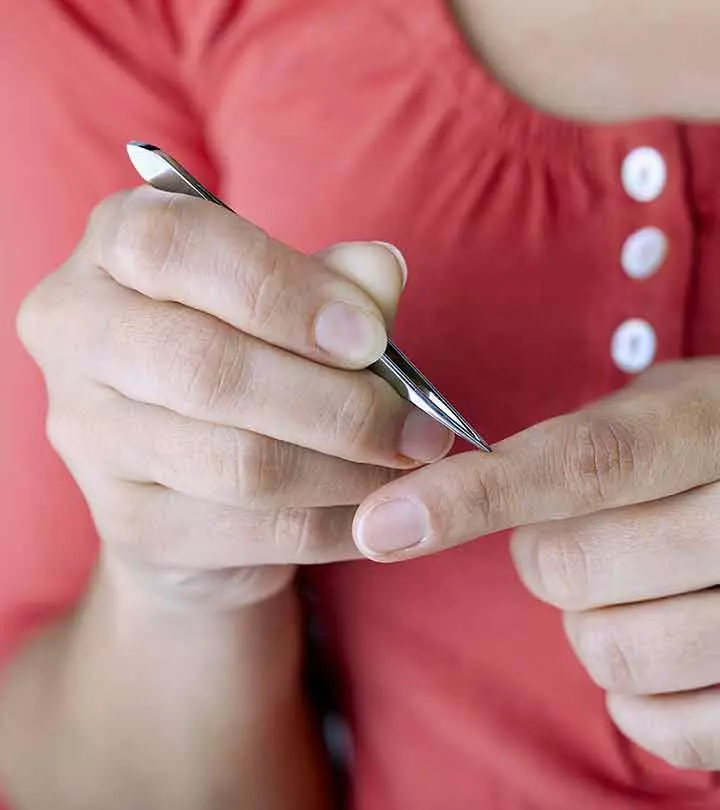
Image: ShutterStock
A splinter, also known as a sliver, is a small wound caused by debris like wood shavings, broken glass, thorns, etc., piercing the epidermis and infiltrating the bottom layers of the skin. Splinters in the skin can be excruciatingly painful, and you must get a splinter out naturally as soon as possible to alleviate the suffering. However, knowing the right way and tools to get it out is critical since attempting to take a splinter out incorrectly with a needle or your nails might result in it becoming embedded further into the skin and leading to infections. You can take some pain relief medicines if it hurts too much.
For instance, do not press on the sliver as it may force it to penetrate deeper into the skin. Also, if the sliver is made of glass, it may break into tiny fragments, making it more difficult to remove. However, you should remove splinters from your skin as soon as possible because they can cause other serious illnesses if left inside. Continue reading to learn how to remove a splinter safely and quickly. Scroll down!
In This Article
Types Of Splinters
The splinters that pierce your skin can be made of biological or non-biological materials. Examples of these are as follows:
- Biological splinters – bone, fish spines, teeth, and wood
- Non-biological splinters – small pieces of metal, aluminum, glass, pencil graphite, plastic, etc.
 Quick Tip
Quick TipOutlined below are 10 simple and quick home remedies on how to remove a splinter. Check them out!
Key Takeaways
- The small wounds caused by wood, glass, or thorns are called splinters.
- They are usually painful and need to be removed immediately.
- Simple home remedies like warm water, baking soda, essential oil, or salve may help pull out the splinter.
- Make sure to use sterile gloves, medical scissors, and tweezers from the first aid kit to avoid infections.
How To Get A Splinter Out Naturally
- Baking Soda
- Essential Oil
- Hot Water
- Salve
- Splinter Removal Soak
- Poultice
- Potato
- Vinegar
- Banana Peel
- Egg Shell
1. Baking Soda For Splinter

You Will Need
- 1 tablespoon baking soda
- 1 tablespoon water
- Band-aid
What You Have To Do
- Smear the paste made of baking soda and water directly on the splinter to force it to the surface. Cover the area with the band-aid.
- Allow the poultice to set for a few hours. Remove the band-aid and rinse the paste off the afflicted area.
- Pull the splinter that has been forced to the surface with a tweezer or cuticle plier and apply antiseptic cream or petroleum jelly on the area. You can apply an ice pack before pulling the splinter to numb the area.
How Often You Should Do This
Use this simple home remedy as soon as you realize that your skin has a splinter in it.
Why This Works
Baking soda works well for the tiny, invisible splinters that are deeply embedded in the body.
A paste of baking soda applied on the splinter causes the skin to swell and pushes the splinter out (1).
Tumbleweed, a retired scientist, recounted her experience of using a thick paste of baking soda and water to take out the splinter in her blog. She said, “The next morning I carefully removed the bandage and checked it. Nothing. I looked at the wound and saw something sticking up about 1.5mm (about 1/10th inch) from the wound. I used a tweezer to pull and to my astonishment a sliver nearly one centimeter long came out of the wound. (i).” She further added that the pain reduced significantly and the hole closed within a few hours.
2. Essential Oil For Splinter

You Will Need
- A few drops of lavender oil or Thieves oil
- Sterilized tweezer
What You Have To Do
1. Apply the oil on the affected area with a cotton swab and leave it on for a few minutes.
2. Check if the splinter has risen to the skin surface. If it hasn’t, wait for another seven to eight minutes.
3. You will notice that the splinter has moved up, and it can be easily pulled out using the tweezers.
How Often You Should Do This
For a bigger splinter, reapplication of the essential oil may be required.
Why This Works
The essential oils will draw out the splinter and also prevent any infections from developing because of their antimicrobial properties (2). These oils also possess anti-inflammatory and healing properties that aid in the quick recovery of the skin pierced by the splinter. A 2004 study evaluated the antibacterial effects of patchouli, tea tree, geranium, lavender essential oils, and Citricidal (grapefruit seed extract) against methicillin-resistant Staphylococcus aureus (MRSA) and methicillin-sensitive S. aureus using a dressing model. Results showed that Citricidal and geranium oil had the strongest effect against MRSA, while geranium and tea tree oil were most effective against the methicillin-sensitive strain. These findings suggest that essential oils and their vapors may be useful in combating MRSA infections (3).
3. Removing A Splinter With Hot Water

You Will Need
- Hot water
- A wide-mouthed glass or plastic bottle
What You Have To Do
- Fill the bottle almost to the brim with hot water and press the affected area with the splinter on it.
- Press firmly so that a vacuum is created. Keep it in the same position for a couple of minutes. Then, slowly remove the bottle.
- You can see that the splinter is drawn out, and it can be pulled out easily.
How Often You Should Do This
This method works well the first time to remove splinters.
Why This Works
Due to the vacuum created, a pull is exerted on the flesh. At the same time, the steam from the hot water opens up the skin’s pores (4). These two factors work together and draw out the splinter.
4. Salve
You Will Need
- Ichthammol ointment
- Bandage
What You Have To Do
- Apply a small amount of ointment on the affected area and cover with a bandage or gauze..
- Keep this area away from water. Remove the bandage after a day. The splinter will come out with it.
How Often You Should Do This
This simple ointment is available without a prescription and can be used anytime you suffer from a splinter or sliver.
Why This Works
Ichthammol ointment is also called Black drawing salve. It is derived from shale oil and is one of those remedies that has been passed down from generations to get rid of splinters. This salve possesses antibacterial and anti-inflammatory properties as well. A 1996 study investigated the antibacterial properties of glycerol and ichthammol (G & I), a traditional otological treatment, by analyzing its effectiveness against common ear infection-causing bacteria. The most frequently isolated organisms from discharging ears were Pseudomonas aeruginosa, Staphylococcus aureus, Proteus mirabilis, and Streptococcus pyogenes. Results showed that pure glycerol had no antibacterial activity, while ichthammol alone produced significantly larger inhibition zones than G & I, especially against S. aureus (18 mm) and S. pyogenes (23 mm). The study concluded that G & I’s therapeutic benefits stem from ichthammol’s antibacterial and anti-inflammatory properties, combined with glycerol’s dehydrating effects (5).
5. Splinter Removal Soak

You Will Need
- 3% hydrogen peroxide
- Cotton ball
- Tape
- Tweezer
What You Have To Do
- Soak the cotton ball in the hydrogen peroxide solution and place it on the affected area.
- Secure it in place using adhesive tape. Leave it on for a few hours.
- Remove the cotton ball and carefully pull out the splinter.
How Often You Should Do This
Repeat the process if the splinter hasn’t risen to the surface and is still deeply lodged.
Why This Works
Hydrogen peroxide is a good remedy to rid your hands and feet of splinters
. The area becomes inflamed and swells, making the splinter visible. This can then be easily removed. Hydrogen peroxide is also a disinfectant agent (6).
6. Poultice For Splinters

You Will Need
- A small pinch of Epsom salt
- A large band-aid
What You Have To Do
- Place the Epsom salt on the bandage area of the band-aid and apply the band-aid on the affected area. Make sure that the salt comes in contact with the area where the splinter is lodged.
- Leave the band-aid on for the entire day. Remove it in the evening. The splinter will have risen to the surface and will come out with the band-aid. If it doesn’t, you can simply remove it using tweezers.
How Often You Should Do This
Change the band-aid if it gets wet during the day.
Why This Works
Epsom salt poultice is often recommended by doctors for splinter removal, especially for the deeply lodged ones
. Being a salt, it draws out water from the skin cells, and this brings the splinter to the surface (7).
7. Potato

You Will Need
Raw potato
What You Have To Do
- Place a slice of raw potato on the splinter such that the fleshy part touches the splinter.
- Press the potato slice downwards gently and take it off carefully. If the sliver pierces the slice, it can be lifted off easily.
How Often You Should Do This
Use a thinner slice if the previous slice doesn’t work.
Why This Works
Potato flesh is soft and can easily be pierced by the splinter.
8. Vinegar Splinter Removal

You Will Need
- White vinegar
- A small bowl or basin
What You Have To Do
Soak the affected area in white vinegar for about 15 minutes.
How Often You Should Do This
Repeat the 15-minute soak if the splinter doesn’t rise to the surface.
Why This Works
Like Epsom salt, this treatment too causes the splinter to break through the surface, making it easy to tweeze or scrape.
9. Banana Peel For Splinter

You Will Need
- Banana peel
- Tape
- Tweezer
What You Have To Do
- Place the peel, with the white side down, on the affected area and stick it in place using the tape.
- Leave it on for five to 10 minutes.
- Remove the peel and tweeze the splinter out.
How Often You Should Do This
Leave the peel on for longer if required.
Why This Works
Banana peel is loaded with enzymes that will make the splinter move up to the surface
(8).
10. Egg Shell

You Will Need
- 1 egg
- Band-aid
What You Have To Do
- Crack open the egg and remove its contents.
- Take a big enough piece of the shell (along with the transparent membrane that is found attached to it), and place it on the affected area. Cover it with the band-aid.
- Leave the band-aid on overnight. Remove it in the morning. The splinter will come out with it as well.
How Often You Should Do This
A single application of this home remedy should work effectively in removing the splinter.
Why This Works
The eggshell causes the splinter to ease out of the skin.
Hope now you know how to get a splinter out naturally. Even though a splinter sounds like nothing to worry about, it is important to remove this foreign particle from your body. Using these home remedies will make it easier for you and also prevent any complications.
 Quick Tip
Quick TipNow that you know how to remove a splinter, keep yourself fully prepared to take care of this very common injury.
How To Treat A Splinter Injury
The steps are as follows:
- Wash your hands with soap and water to reduce the risk of introducing bacteria to the wound.
- Gently clean the area around the splinter with mild soap and warm water. Pat it dry with a clean, sterile cloth.
- Remove the splinter with any of the remedies mentioned above. Use a tweezer to pull it out gently to avoid breaking the splinter.
- Clean the wound again with mild soap and water before applying an antiseptic cream or solution to the area.
- Use a bandage to cover the wound to protect it from dirt or further impact. Change the bandage daily.
- Monitor the area for redness, swelling, pain, or discharge. In case of infection, seek medical attention immediately.
When removing a splinter at home, it’s important to be aware of the potential risks and complications. If not removed properly, a splinter can cause infection, irritation, or even embed deeper into the skin, making removal more difficult. Additionally, using unsanitized tools or applying excessive force can damage the surrounding skin, leading to bleeding or scarring. If the splinter is large, deeply embedded, near the eye, or causing significant pain, it’s best to seek medical attention rather than attempting removal at home.
Infographic: Home Remedies To Get Rid Of A Splinter Safely
Splinters embedded in the skin can be painful and cause discomfort. Additionally, they could disperse bacteria and cause infection.
Thankfully, you can get rid of them easily at home. Check out the infographic below to learn ways to remove a splinter safely. Illustration: StyleCraze Design Team
Splinters, or small wounds caused by debris, can be extremely painful and challenging to deal with. You need to know exactly how to get a splinter out to avoid the risk of the debris getting embedded deeper into the skin. You cannot let it stay in for the risk of serious complications, so apply your preferred home remedies for splinter removal to get it out safely. Baking soda, hot water, lavender oil, ichthammol ointment, hydrogen peroxide solution, or Epsom salt at hand are some of the readily available choices in home remedies. However, once you have selected what to use, you need to follow the instructions for applying them very carefully to get the splinter out safely. Please seek medical help if these techniques fail to remove the splinter.
Frequently Asked Questions
How can I prevent splinters?
Wear protective gloves or shoes to minimize splinters when working with wood or on rough surfaces. Also, check and repair tools and equipment to eliminate sharp edges.
Are there any risks associated with splinters?
Yes, splinters may increase the risk of infection, particularly if the area is left untreated or if dirt and germs are added. In rare instances, splinters made of particular materials, such as wood or metal, may result in more serious consequences, like abscesses or systemic infections. Deeper splinters may cause swelling, redness, and pain.
What is a splinter hemorrhage?
A splinter hemorrhage is when there is bleeding under the nails, both the fingernails and the toenails. This bleeding looks like long, reddish-brown lines and gives the appearance that there is a splinter under the nail. Hence, it is called a splinter hemorrhage, even though there is no splinter lodged in the skin (9).
What happens when splinters are left untreated?
Leaving a splinter untreated is usually not advised as an infection can develop. Sometimes, the body can close off the split in the skin with the splinter still inside. Here, it can either cause no pain or be a constant irritant. It can develop infections depending upon how dirty the site of entry was. It is always recommended to remove the foreign particle from the body in order to avoid infections.
Keep in mind that no matter what method you use, it is important to clean the wound caused by the splinter with antiseptic soap and water before using any home remedy.
When should you go to the doctor for a splinter?
You need to seek medical help if you cannot remove a splinter entirely, the wound where the sprinter has entered is bleeding profusely, there are any signs of skin avulsion, or the splinter is embedded beneath a toenail or a fingernail.
How do you tell if a splinter is infected?
Signs of an infected splinter wound include warmth in the area, redness, swelling, and pus. You can use rubbing alcohol on the skin surface as soon as the wound occurs to avoid infection.
Illustration: Home Remedies To Get A Splinter Out Easily With No Pain
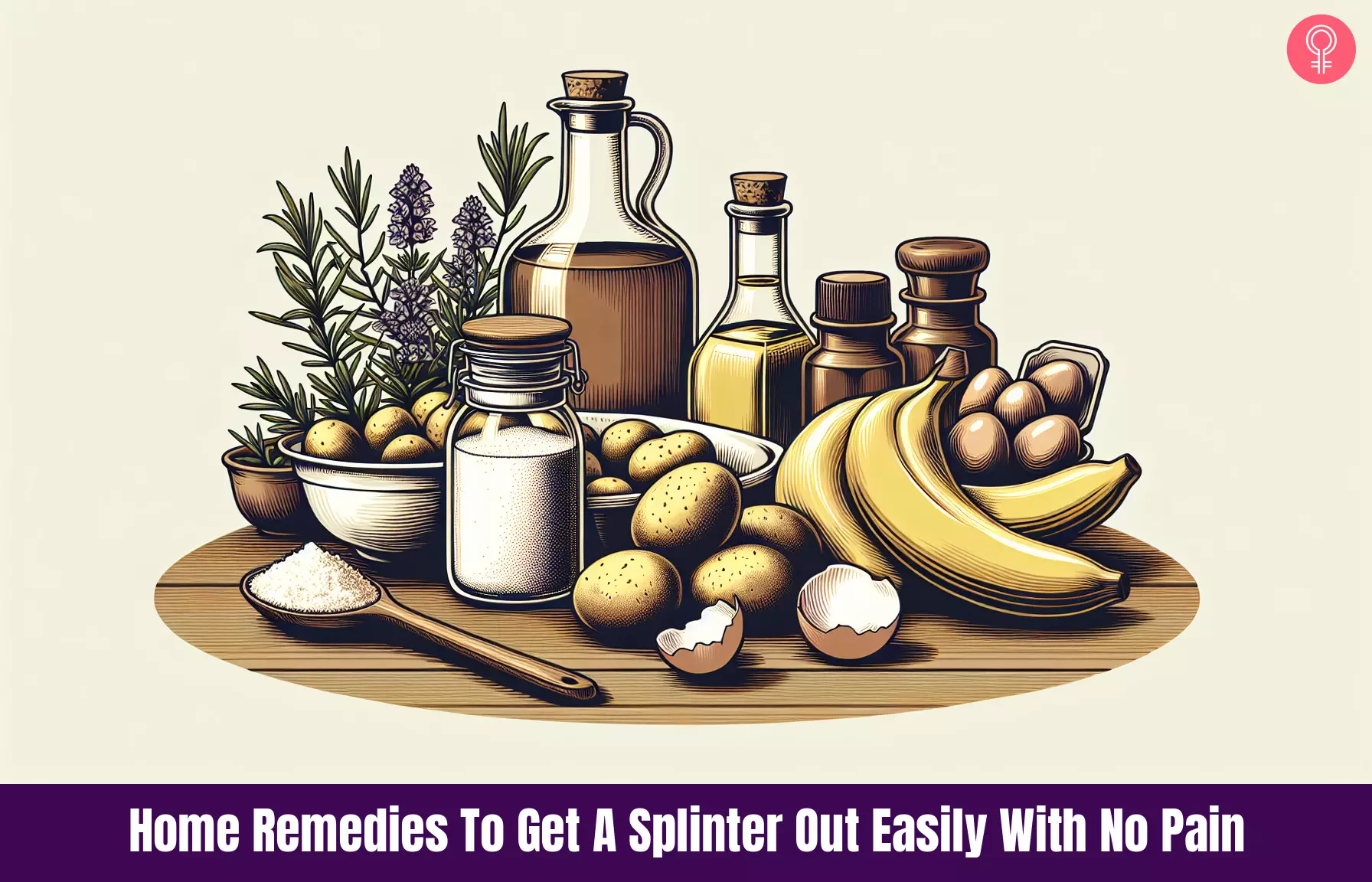
Image: Dall·E/StyleCraze Design Team
Discover a painless method to remove splinters from your finger, hand, or toe without cutting, blood, or picking needles. Watch this video for easy and effective splinter removal techniques.
Personal Experience: Source
StyleCraze's articles are interwoven with authentic personal narratives that provide depth and resonance to our content. Below are the sources of the personal accounts referenced in this article.
i. Baking soda paste for sliver removalhttps://tumbleweedstumbling.wordpress.com/tag/removing-a-sliver/
Read full bio of Dr. CP Thajudheen
Read full bio of Kushneet Kukreja
Read full bio of Ramona Sinha
Read full bio of Monomita Chakraborty









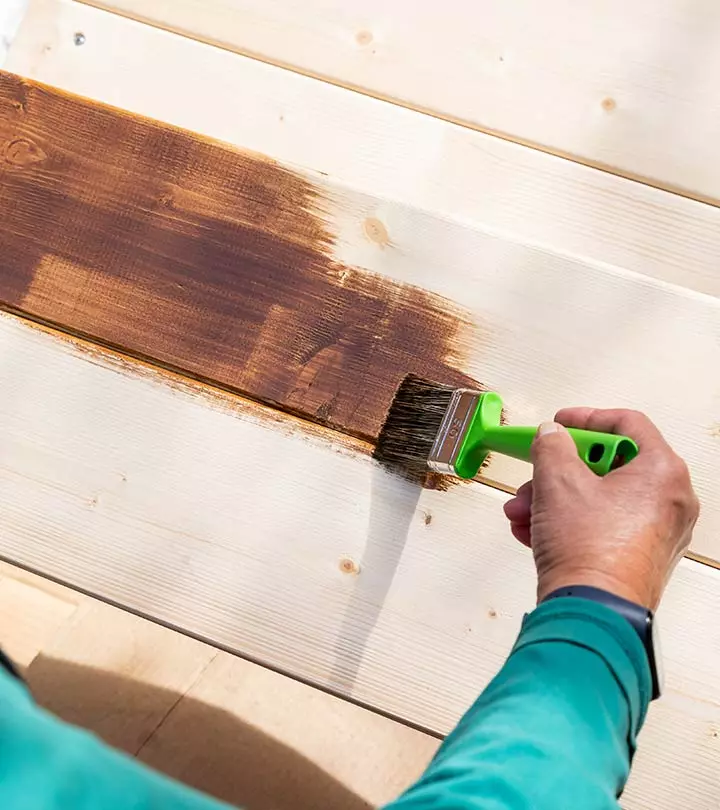




![How To Get Jalapeño Off Hands & Stop The Burn [5 Easy Remedies] How to get a splinter out](https://cdn2.stylecraze.com/wp-content/uploads/2021/10/How-To-Get-Jalapeno-Off-Hands-With-Pantry-Staples-And-Home-Remedies.jpg.webp)
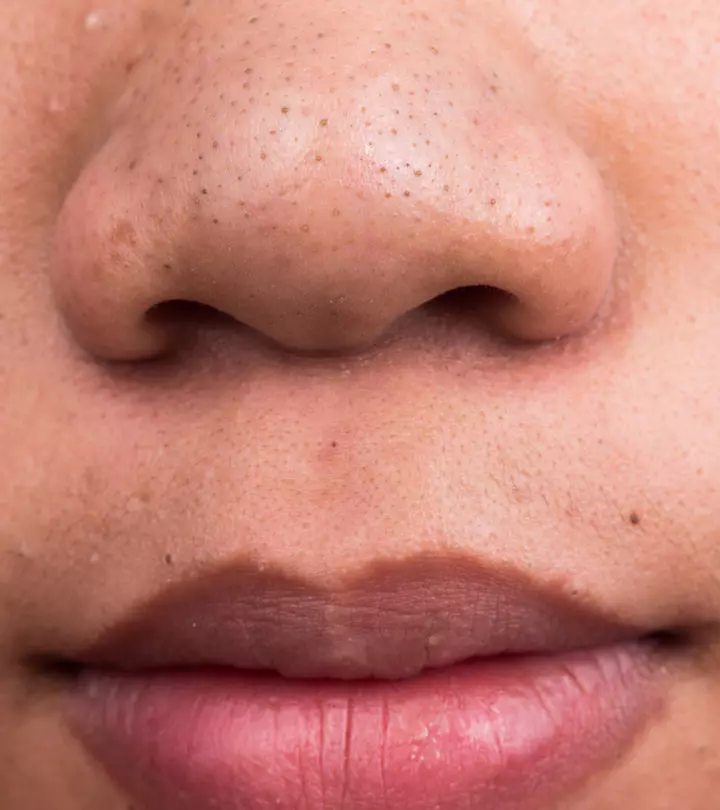



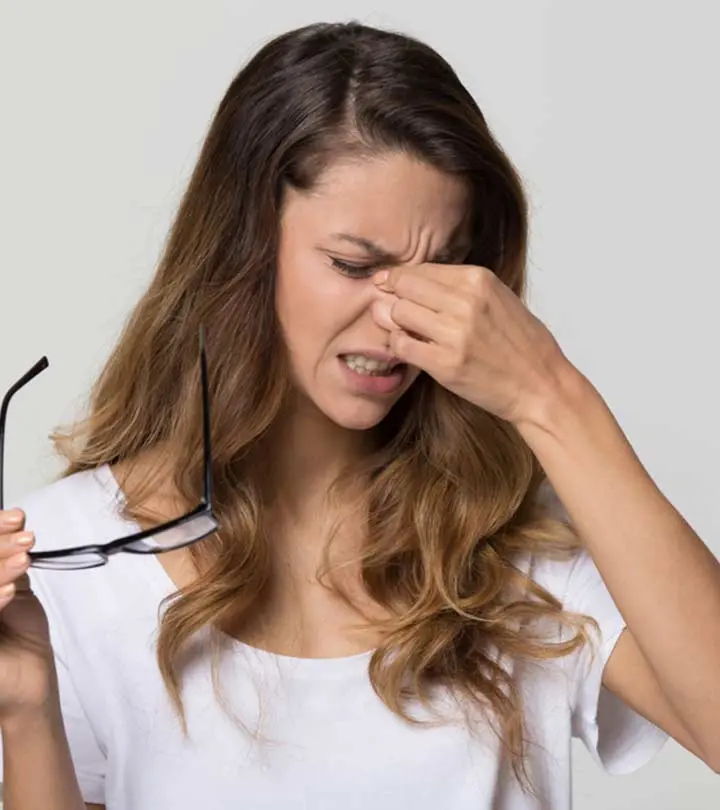







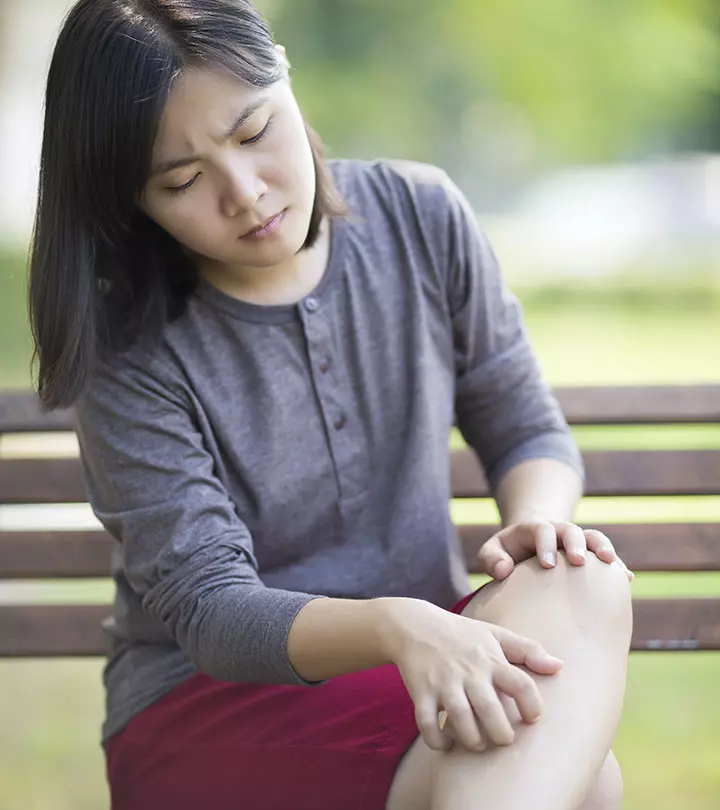
Community Experiences
Join the conversation and become a part of our empowering community! Share your stories, experiences, and insights to connect with other beauty, lifestyle, and health enthusiasts.